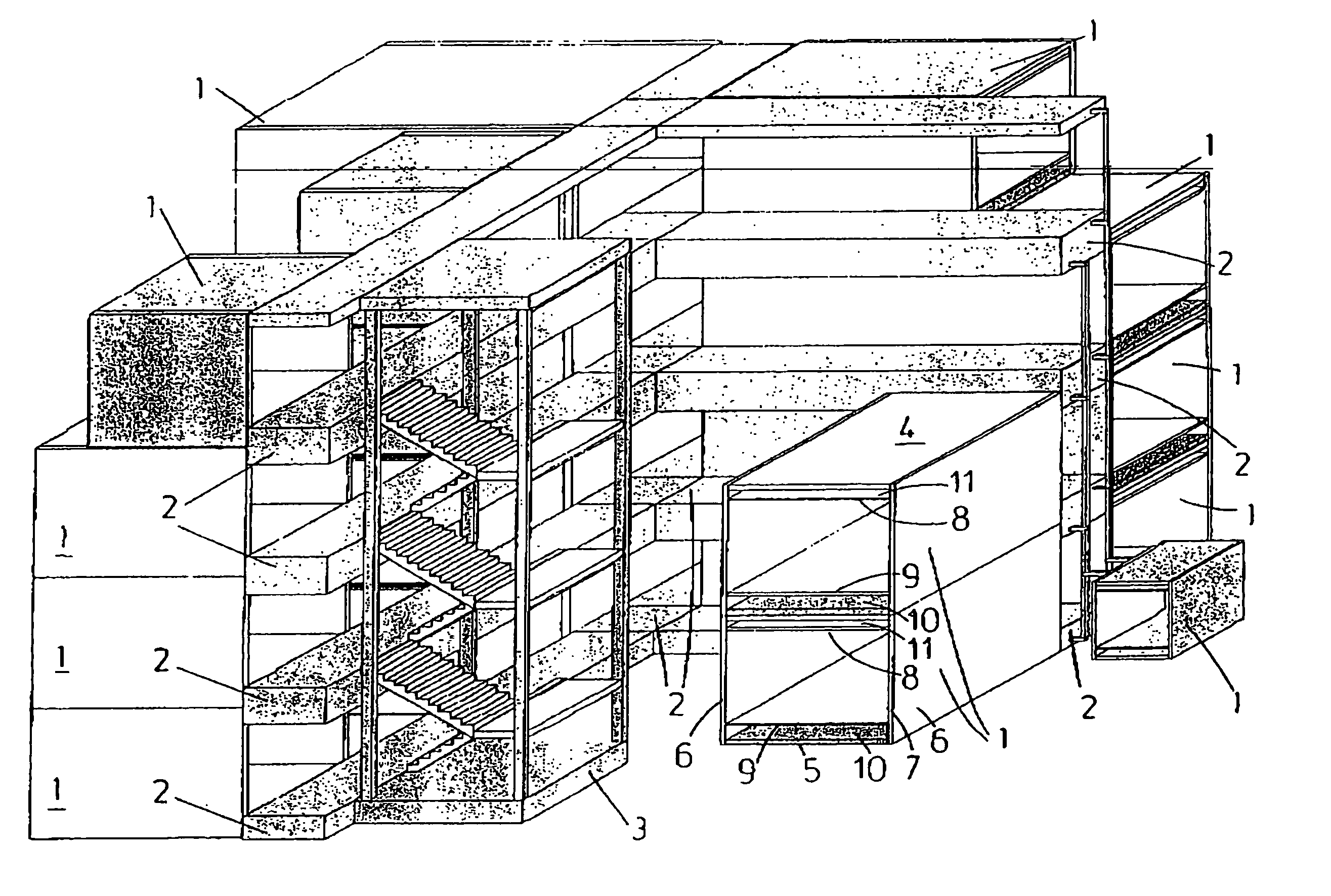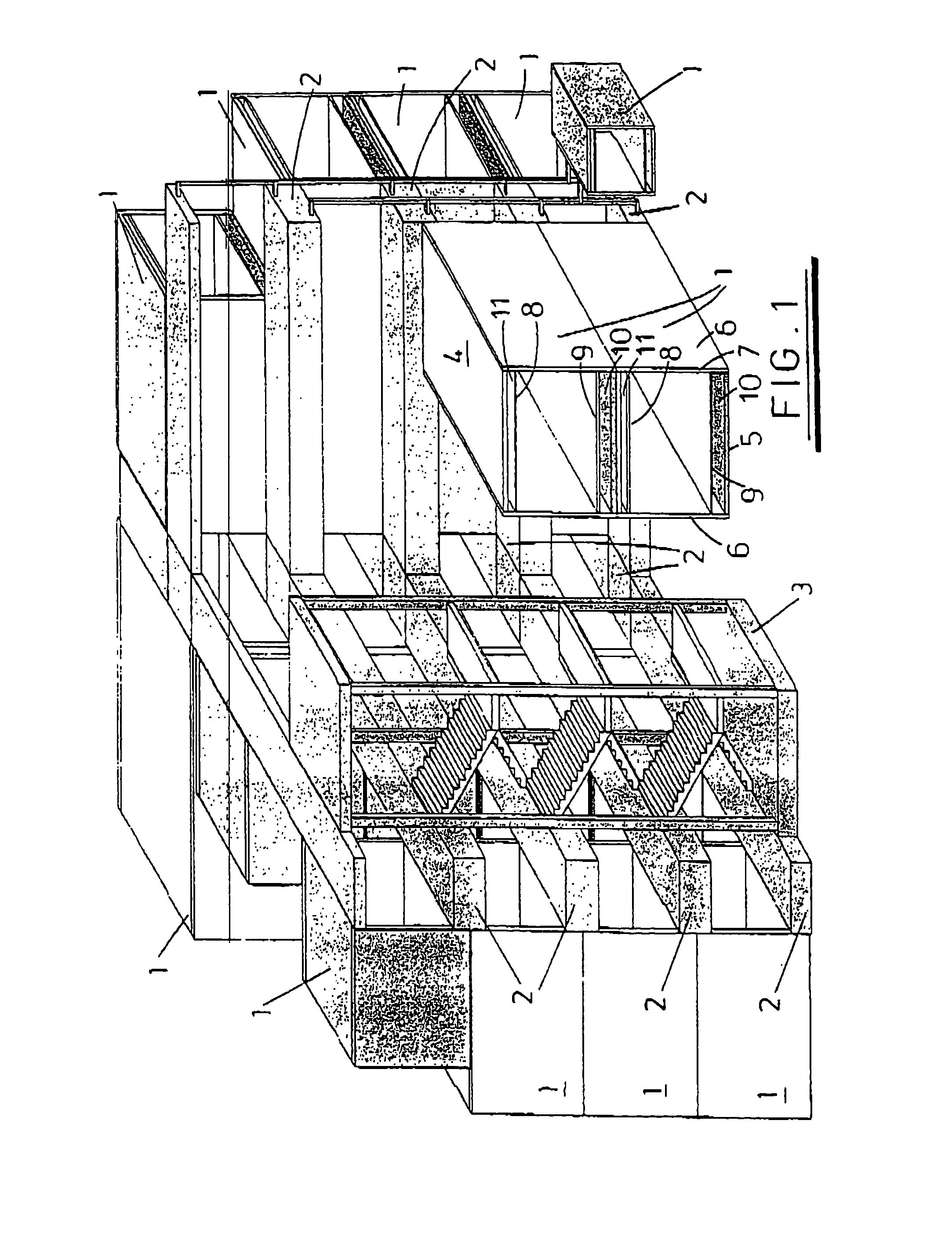Modular buildings
a technology of modular buildings and buildings, applied in the field of modular buildings, can solve the problems of inconvenient application of portable and prefabricated buildings in both sectors, wear and tear of the structure of the building, and the design of prefabricated buildings has not proved suitable for long-term or permanent applications,
- Summary
- Abstract
- Description
- Claims
- Application Information
AI Technical Summary
Benefits of technology
Problems solved by technology
Method used
Image
Examples
Embodiment Construction
[0031]Referring now to the drawings, FIG. 1 shows an exemplary modular building structure comprising a plurality of cabin modules 1 interconnected by corridors 2. The cabin modules 1 are designed to be furnished and used as, for example, offices or living quarters whereas the corridors 2 form passageways that, in addition to providing walkways between cabin modules 1, carry and distribute service supply lines to the cabin modules 1. The building shown has multiple storeys that are interconnected by a stairwell 3 in the foreground.
[0032]For the purposes of clarity end walls of the cabin modules 1 and all corridor walls are not shown. The only parts of the corridor shown are the floors and ceilings (which are combined on intermediate storeys).
[0033]The building structure is assembled from the cabin modules 1 and corridors 2 using the known honeycomb principle in which there is no overall super-structure and the integral strength of the structure is shared by each module both laterally...
PUM
 Login to View More
Login to View More Abstract
Description
Claims
Application Information
 Login to View More
Login to View More - R&D
- Intellectual Property
- Life Sciences
- Materials
- Tech Scout
- Unparalleled Data Quality
- Higher Quality Content
- 60% Fewer Hallucinations
Browse by: Latest US Patents, China's latest patents, Technical Efficacy Thesaurus, Application Domain, Technology Topic, Popular Technical Reports.
© 2025 PatSnap. All rights reserved.Legal|Privacy policy|Modern Slavery Act Transparency Statement|Sitemap|About US| Contact US: help@patsnap.com



